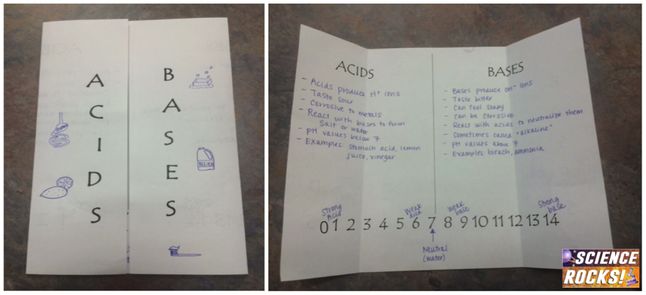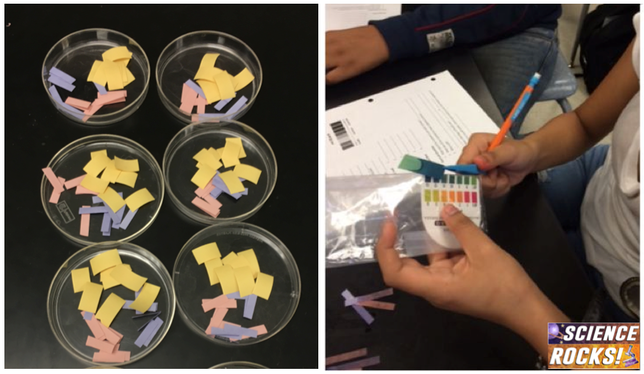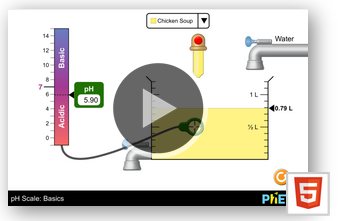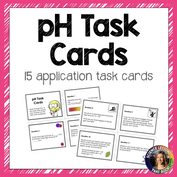pH…. one of those chemistry topics that us biology teachers get to teach. In biology I don’t make my students calculate pH and pOH values, but they need to understand what pH is and why maintaining a healthy pH in your body is so important. You may love biochemistry, or you may hate it, but either way there are plenty of resources to make teaching pH easy!
1. One of the first things I have my students do is make a pH foldable. As we go through the lesson, they take notes on acids and bases, and label the pH scale at the bottom. Foldables are really easy to have students make on their own, but if you are interested in a template, click here.
2. After students learn what pH is, I have them complete a pH lab. The lab available in my TpT store is editable, so you can use whatever liquids you have on hand. I try and find a couple acids, a couple bases, and some neutrals (especially water!). A few hints to make your lab go more smoothly: First, don’t let the students grab the roll of pH paper themselves. Save yourself some money by making your pH and litmus paper go further by pre-cutting them. I cut the litmus paper in half and cut the pH paper into small strips. Students can use tweezers to dip them into the liquids, so small pieces work great. By cutting them in half I could get through the whole day with one vial of red and one vial of blue. Also, put your pH color keys in a ziplock baggie. Students always hold the wet pH paper up to it for comparison, and if it is in a baggie it won’t get ruined.
|
Looking for a virtual option? Check out this virtual lab from PHET. Students will explore the pH of different liquids and learn about neutralization.
Alright, so now students know what pH is and how to measure it, but why is it important? |
3. Since I teach pH right before I dive into cells, this is a great time to talk about enzymes and denaturation. When the pH of our body changes, these enzymes can unfold, or denature. Once enzymes change shape, they no longer function. Enzymes are very specific, so enzymes that are in your stomach will work best at an acidic pH, and enzymes in your bloodstream will work best around a neutral pH. If you have some extra pH paper it is fun for the kids to put a piece on their tongue and measure the pH of their saliva. We talk about how there are enzymes in their saliva that start the digestion process.
Another good topic to talk about is neutralization in the body. I usually start by telling students if I drink orange juice on an empty stomach, I will inevitably get a stomach ache. Why? Students usually recognize that orange juice is an acid and the acid is causing the belly ache. Next, I ask them what do they do when they have a stomach ache? We talk about Tums and Pepto Bismol, and how the alkaline medicine neutralizes the acid in my stomach.
If you are looking for some task cards that cover application of the pH scale (not just knowing how to test) then you can click here to check them out.
Want to save this blog post for later? Click here to repin!
Rock on,












